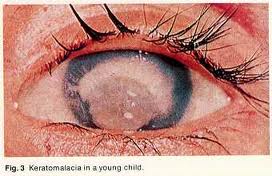Disorders
- Anorexia Nervosa
- Binge Eating Disorder
- Bitot's Spots
- Bulimia Nervosa
- Macrocytic Anemia
- Megaloblastic Anemia
- Night Blindness
- Peptic Ulcer
- Prophylaxis
- Rhodopsin
- Rickets Disease
- Scurvy Disease
- Wilson’s Disease
- Xerophthalmia
- Hemochromatosis
- Siderosis
- Thalassemia
- Sideroblastic Anemia
- Porphyria Cutanea Tarda
- Sickle Cell Anemia
- Kwashiorkor
- Menkes Disease
- Neutropenia
- Keratomalacia
- Beriberi
- Pellagra
- Macrocytic
- Megaloblastic
- Pernicious Anemia
- Scurvy
- Rickets
- Osteomalacia
- Abetalipoproteinemia
- Muscular Dystrophy
- Haemolytic Anaemia
- Cholestatic Constipation
- Pretibial Myxedema
- Cretinism Diesease
- Hypothyroidism
- Hypothyroidism
- Feline Hyperthyroidism
- Graves Disease
- Plummer’s Disease
- Thyrotoxicosis
- Acrodermatitis Enteropathica
- Congenital Hypothyroidism
- Hashimoto’s Thyroiditis
- Hyperthyroidism
- Keshan Disease
- Lose Weight with Hypothyroidism
- Metal Fume Fever
- Postpartum Thyroiditis
- Thyroid Storm
- Subclinical Hypothyroidism
Keratomalacia and Liver Disease

Some illnesses are caused when an individual lacks certain vitamins or other nutrients in their system. This lacking of a vital ingredient then leads to the body exhibiting problems in a number of ways.
Keratomalacia is an eye (ocular) condition that affects both eyes. It if often referred to as Night Blindness, Retinol Deficiency, and Vitamin A Deficiency. Keratomalacia is classified as a rare illness. It usually results from a severe deficiency of Vitamin A. Vitamin A is essential for normal vision, as well as bone growth, skin and protection of the mucous membranes of the digestive, respiratory and urinary tracts against infections.
Who can get it?
Keratomalacia particularly affects infants and children. While it is most common in children, adults can also develop this illness. It seems to affect more children in Africa and Latin America. Children between the ages of three-five seem to be the most vulnerable to this aliment. It can occur in developing countries, as well as under developed ones. In developing regions, Vitamin A deficiency occurs as part of a general malnutrition in infants and children. It may also occur as a result of other conditions such as celiac disease, cystic fibrosis, liver disease, or any condition that affects the absorption of fat-soluble vitamins.
What causes it?
Keratomalacia is caused when an infant or child does not get the required amount of Vitamin A in their diet. This deficiency may be dietary or metabolic in nature.
How does it happen?
When an infant or child does not get enough Vitamin A in their diet, it results in this eye condition that can lead to childhood blindness.
Where does it appear?
Keratomalacia appears in the eyes. The eyes become dry and the corneas cloud over. The surface of the conjunctiva and cornea dries, then corneal ulcers and bacterial infections may occur. The tear glands are also affected, resulting inadequate tear film and dry eyes.
What are the symptoms?
The symptoms of Keratomalacia include poor vision at night or in dim light, and extreme dryness of the eyes, which is then followed by wrinkling, cloudiness, and an increase softening of the corneas. If the Vitamin A deficiency continues silver-gray deposits called Bitot spots will appear to cover the whites of the eyes. Without treatment it will lead to corneal infections, rupturing of the corneas, and blindness.
How can it be diagnosed?
Doctors can quickly diagnose Keratomalacia by doing blood tests. The blood tests will be used to look for a Vitamin A deficiency. An examination of the eyes will also be conducted to rule out any other eye conditions.
What treatments are available?
Treatment of Keratomalacia should be started immediately after diagnosis. Keratomalacia is irreversible and can cause permanent corneal scarring. The earlier the treatment is started, the less likely that permanent blindness will occur in the individual. The first thing is to get the individual diet supplements rich in Vitamin A or beta carotene, improving the diet and adding the missing nutrient is the first step in stopping further damage to the eyes. The child should be given three doses of Vitamin A supplements daily. Improvements will usually be seen in the child, after several days. An antibiotic eye drops or ointment is also prescribed to help prevent any secondary infections that can occur. In some cases steroids are also given to help with this aliment.
Keratomalacia is an illness that results from a lack of vitamins in an individual’s diet. A person’s diet is so important to the individual’s overall health and well-being. While they are some illnesses that are hereditary and can’t be helped, they are some like Keratomalacia that can be prevented. It is important to get the recommended amounts of all the nutrients that are needed to enable your body to function at its best. Diet supplements rich in Vitamin A should be provided to areas that are have children with a high incidence of this illness. Parents should also carefully monitor their children to seem if they are having trouble distinguishing colors or identifying colors. Also, if your child squints or shields their eyes from light this is also another sign that you should get your child to the doctor and have it check out.
Hope this article will provide you information about Keratomalacia.
